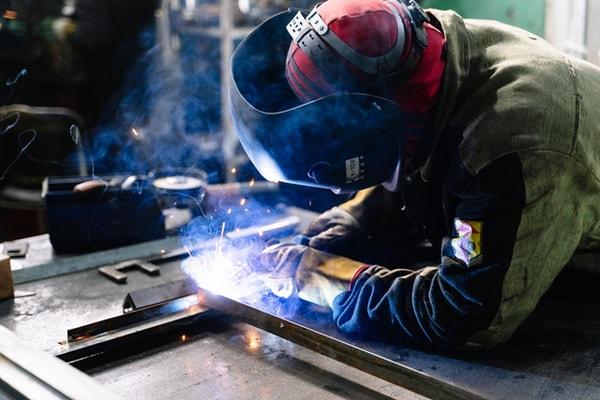Why a Welding WPS is Crucial: Enhancing Consistency and Compliance
Why a Welding WPS is Crucial: Enhancing Consistency and Compliance
Blog Article
Understanding Welding WPS Standards: Ideal Practices and Techniques for Top Quality Welds
In the world of welding, mastering Welding Procedure Requirements (WPS) standards is a crucial part that directly affects the top quality and integrity of welds. As we browse through the details of welding WPS requirements, revealing key understandings and techniques for attaining top-tier welds will certainly be critical for welders looking for to excel in their craft and produce welds that stand the test of time.
Recognizing Welding WPS Requirements

Understanding WPS standards is important for welders, designers, and assessors associated with welding procedures. By following WPS standards, welders can create welds that fulfill the needed mechanical residential or commercial properties and architectural honesty. Assessors rely upon WPS documents to validate that welding procedures are being adhered to appropriately which the resulting welds are of premium quality. Engineers use WPS standards to develop welding procedures that make sure the resilience and integrity of welded structures.


Essential Tools for Top Quality Welds
Understanding welding WPS standards is crucial for welders to successfully utilize the necessary devices needed for producing top quality welds. One of one of the most essential tools for quality welds is a welding equipment. The sort of welding machine needed relies on the welding procedure being used, such as MIG, TIG, or stick welding. Welding helmets are also vital to protect the welder's eyes and face from sparks, heat, and UV radiation. Furthermore, welding gloves made of long lasting and heat-resistant materials secure the hands from injuries and burns. Clamps and magnets assist hold the work surfaces with each other securely throughout the welding procedure, making sure precise and exact welds. Cord brushes and damaging hammers are vital for cleaning up the weld joint before and after welding to remove any type of contaminations that might influence the high quality of the weld. Last but not least, a determining tape and angle mill are useful tools for making sure proper positioning and preparing the workpieces for welding.
Key Methods for Welding Success
To accomplish welding success, one have to master the vital techniques crucial for creating top quality welds. One essential method is keeping the appropriate arc length. Keeping the electrode at the optimal distance from the workpiece is important for creating strong, uniform welds. Furthermore, controlling the traveling rate is vital. Relocating too swiftly can result in inadequate infiltration, while moving too gradually can lead to excessive warmth input and prospective defects. Appropriate adjustment of the electrode angle is another crucial technique. The angle at which the electrode is held can impact the bead shape and infiltration of the weld. Furthermore, making sure consistent weapon angle and direction of travel is vital for harmony in the weld grain. Lastly, keeping a secure welding and a steady hand setting throughout the procedure is key to accomplishing precision and uniformity in the welds. By understanding these vital techniques, welders can raise the high quality of their work and accomplish welding success.
Ensuring Compliance With WPS Specifications

Furthermore, welders should undertake training to familiarize themselves with the WPS requirements relevant to their job. Routine audits and evaluations must be conducted to validate that welding activities line up with the prescribed WPS guidelines. Furthermore, keeping detailed records of welding parameters, equipment calibration, and examination results is vital for demonstrating conformity with WPS standards - welding WPS. By carefully adhering to WPS requirements, welders can ensure that their work meets the required quality degrees and adds to the general success of the welding task.
Troubleshooting Common Welding Issues
When faced with common welding issues, determining the origin is essential for effective troubleshooting. One prevalent problem is the presence of porosity in welds, commonly brought on by impurities such as corrosion, oil, or moisture. To resolve this, making certain correct cleansing of the base steel prior to welding and making use of the proper securing gas can significantly lower porosity. An additional problem regularly run into is absence of fusion, where the weld falls short to correctly bond with the base product. This can stem from inadequate heat input or inappropriate welding technique. Changing specifications such as voltage, cable feed rate, or travel rate can assist improve that site blend. Additionally, distortion, splitting, and spatter prevail welding challenges that can be mitigated with correct joint prep work, regular warm control, and selecting the proper welding consumables. By extensively understanding these typical welding problems and their origin, welders can effectively fix problems and accomplish high-quality welds.
Verdict
In conclusion, understanding welding WPS requirements requires a thorough understanding of the guidelines, making use of vital tools, and applying essential techniques for successful welds. Making sure compliance with WPS criteria is essential for producing quality welds and avoiding typical welding issues. By following ideal techniques and methods, welders can attain reliable and constant lead to their welding jobs.
In the realm of welding, mastering Welding Treatment Spec (WPS) requirements is a critical component that straight affects the high quality and honesty of welds.When delving into the world of welding methods, an essential aspect visit here to comprehend is the significance and details of Welding Procedure Requirements (WPS) criteria. WPS criteria provide an in-depth guideline for welding procedures, making certain consistency, top quality, and security in the welding procedure. The type of welding machine needed depends on the welding process being made use of, such as MIG, TIG, or stick welding.Accomplishing welding success through the proficiency of crucial methods necessitates a detailed understanding and adherence to Welding Procedure Specification (WPS) standards.
Report this page